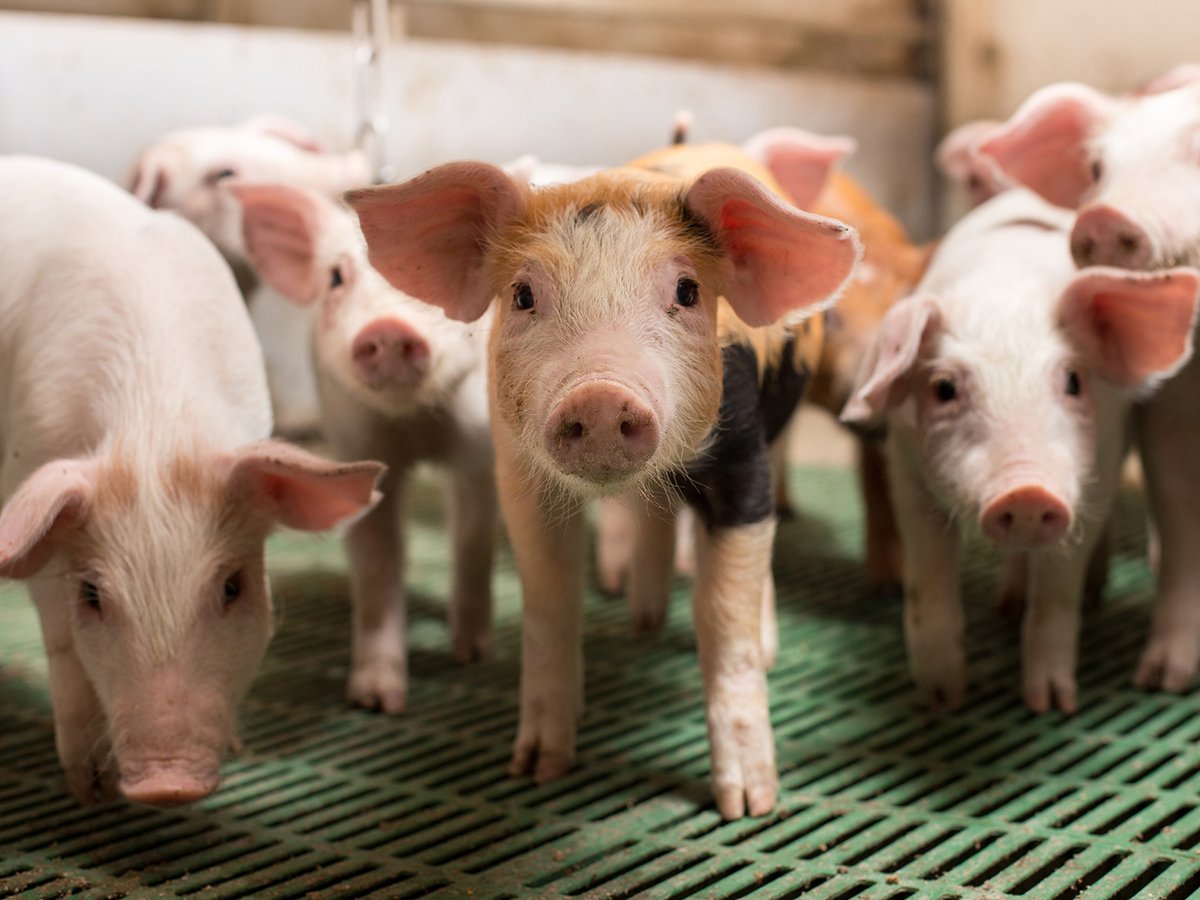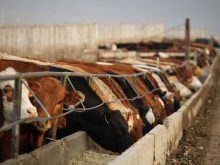BASHAW, Alta. – When the grass turns green and the days grow longer, Dawn Miller-Wilson and her husband Lee Wilson start selecting from their Angus herd for an annual tour in the purebred show circuit.
Not only does this couple win at prestigious shows all over Canada, they are sought after as judges for every purebred breed in the country.
They’ve won so many shows, the banners and rosettes are piled up in a room off one of the barns at their Bashaw ranch. They are not only out to win, they’re out to have fun and socialize with the purebred fraternity that turns out for major cattle shows every year.
Read Also

The Western Producer Livestock Report – October 9, 2025
Western Producer Livestock Report for October 9, 2025. See U.S. & Canadian hog prices, Canadian bison & lamb market data and sales insights.
Part of the success in the show ring lies in knowing how to present well-groomed cattle. Working with Browarny Photographics in Calgary, they produced a video that teaches basic animal grooming and clipping skills. The video is widely used by 4-H clubs.
“It’s for people who need some guidance in how to get started,” said Dawn.
Their first version has been replaced with a second one that is more polished and shows some updated techniques. It is now selling in the United States.
“Everywhere we have judged, people have asked about the video,” she said.
Their season starts in late spring when they pack up the tack box, load this year’s animals and hit the road along with their three small children aged eight to four.
They believe the show ring is a good promotional tool for their purebred Angus.
“In the last few years, as Angus has grown in popularity, it’s easy to tell it does a lot of good,” said Lee.
They plan to take 10 animals to the Calgary Stampede and 30 to Edmonton Northlands this fall.
“Every year we swear we’re not going to take as many, but we do,” said Dawn.
They do all their own preliminary grooming until show day and then they hire or commandeer additional help for the final touches.
They have won the Calgary Stampede Supreme championships in the bull and female categories as well as grand champion steer.
This win is a major coup because not only do they receive $5,000 in prize money, all the competing cattle are excellent because they are all grand champions from their respective shows. The Supreme champion is selected by a panel of seven judges.
In addition, the Stampede draws more than one million visitors every year from all over the world.
“Calgary is second to none because of their advertising. Everywhere you travel in the world, people have heard of the Calgary Stampede,” said Dawn.
Several winning shows
They’ve also raised the Canadian Angus Show bull and female of the year. This involves winning a series of shows designated by their breed association. They also show at the Edmonton Northlands Show, Agribition and Angus Sweepstakes in Edmonton. They’ve walked away with the grand champion honors at every one.
They have judged all over North America and Dawn has judged in Australia. A special honor was being selected as the only woman judge for the Japanese International Livestock Show when she was only 18 years old. Being tall, slender with flaming red hair and a hearty laugh, as well as having a good eye for cattle, made her as much a hit as the cattle in the Japanese show ring.
This year they will judge at the Toronto Royal Winter Fair and Lee has been booked for the Limousin show at Regina’s Canadian Western Agribition this winter.
Judging requires a thick skin and the ability to explain why one animal placed higher than another.
“If you can explain why you put something where you put it, most people can appreciate it. The only person you’re going to make happy is the one you put on top,” she said.
They’ve picked up their judging skills from experience and a decision not to let fads and fashion in beef conformation affect their judgment. Instead they go with the kind of cattle they like.
The young couple keeps 90 purebred Angus cows on their ranch near Bashaw. Cattle is their only income. Calves come in January and cows are bred by their own bulls either by artificial insemination or naturally.
They cull hard and strive for good mothers and easy fleshing cattle that don’t cost a fortune to feed.
Bull buyers include other breeders and commercial cattle producers.
A growing segment of their business is international embryo sales. Genetics from their farm have been shipped as far away as China, Ireland and Australia.
Embryo transfer from superior animals is increasingly popular in the cattle trade because it’s cheaper to ship frozen embryos as opposed to live cattle. The technology has improved to the point that their customer base has broadened substantially, said Lee.
Visitors come to the ranch almost every week and they’ve learned how to host guests from Africa, Europe and Asia. The farm is a showplace and the loft of their hip-roofed barn has been converted to a western style recreation room that can be used for dinners and parties.
“We don’t have 10 days in the year where we don’t have someone here – whether it be a neighbor looking for a bull or someone from wherever,” said Dawn.















